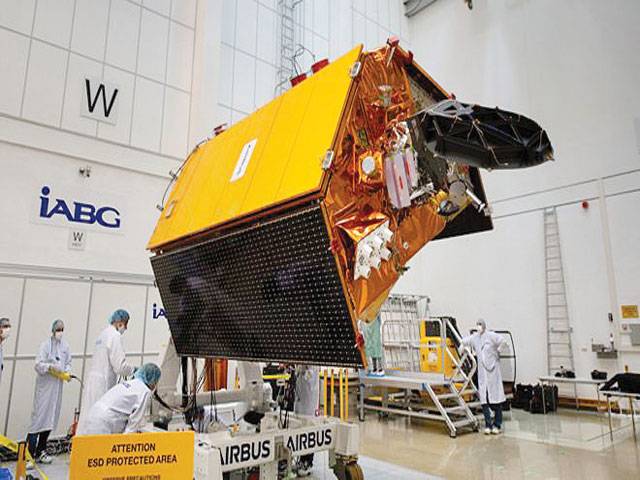LONDON-The next satellite tasked with maintaining the “gold standard” measurement of sea-level rise is about to enter final testing.
Sentinel-6a will pick up from the long-running Jason series of spacecraft when it launches in November 2020. These missions track the height and shape of Earth’s oceans with microwave altimeters.
Since 1992, the orbiting instruments have observed sea level go up by an average of 3.2mm per year.
This trend is accelerating, however. The most recent five-year period, from 2014 to 2019, has witnessed a 4.8mm/yr increase.
Sentinel-6a marks the first time this hugely important mission series will fly under the badge of the EU’s Copernicus Earth observation programme. It is still a joint venture between Europe (principally France) and the US, but the Copernicus patronage gives long-term security of financing.
In the past, there was always some uncertainty over where the funding would come from to initiate the next iteration of spacecraft. Now, not only is Sentinel-6a entering testing but its follow-on, Sentinel-6b, has all its money in place with construction due to begin in 2021.
Senior space agency and industry officials gathered at the IAGB facility in Ottobrunn, near Munich, Germany, on Friday to celebrate one year to launch.
The IABG company will check over the Sentinel’s systems to ensure they are fit to ride to orbit on a Falcon-9 rocket.
When it eventually gets up there, Sentinel-6a will spend a number of weeks running alongside the current operational satellite, Jason-3. This will enable scientists to cross-calibrate their “Poseidon altimeters”.
These instruments are used to map the various “hills” and “valleys” in the ocean surface below. Understanding the variations in elevation over time has myriad applications, both short term and long term. Just as air pressure tells meteorologists what is going on in the atmosphere, so ocean height will betray details about the behaviour of water below just the top layers.
The data gives clues to temperature and salinity. When combined with gravity information, it will also indicate current direction and speed. The oceans store vast amounts of heat from the Sun, and how they move that energy around the globe and interact with the atmosphere are what drive key elements of our weather and climate systems.
Thursday, April 18, 2024
Sentinel for sea-level rise enters testing

3:56 PM | March 28, 2024
4:14 PM | March 23, 2024
Stefanos Tsitsipas advances in Barcelona
4:19 PM | April 18, 2024
Met Office predicts more rains across country till April 29
2:51 PM | April 18, 2024
Punjab changes school timings for summer season
1:55 PM | April 18, 2024
Enemies of Pakistan are unable to digest investment in the country: Ataullah Tarar
1:29 PM | April 18, 2024
IHC restores Bushra Bibi's appeal for shifting to Adiala Jail from Bani Gala
1:24 PM | April 18, 2024
Hepatitis Challenge
April 18, 2024
IMF Predictions
April 18, 2024
Wheat War
April 18, 2024
Rail Revival
April 17, 2024
Addressing Climate Change
April 17, 2024
Justice denied
April 18, 2024
AI dilemmas unveiled
April 18, 2024
Tax tangle
April 18, 2024
Workforce inequality
April 17, 2024
New partnerships
April 17, 2024
ePaper - Nawaiwaqt
Advertisement
Nawaiwaqt Group | Copyright © 2024





